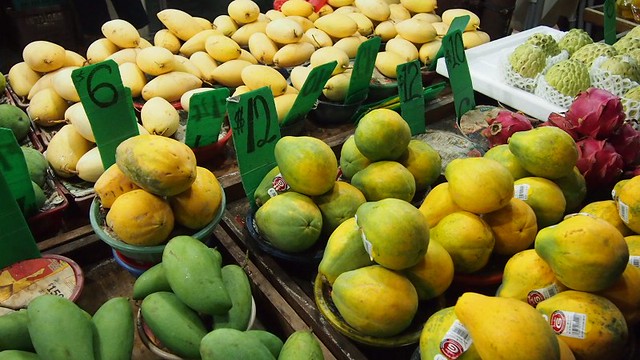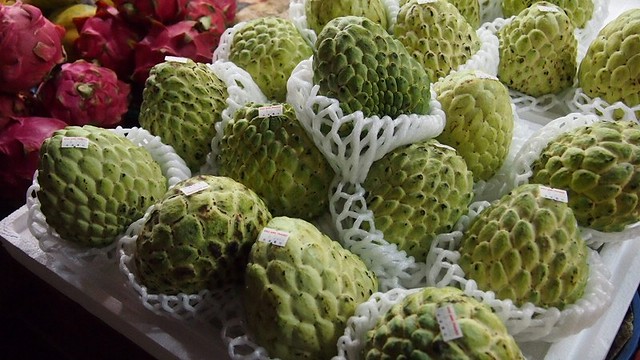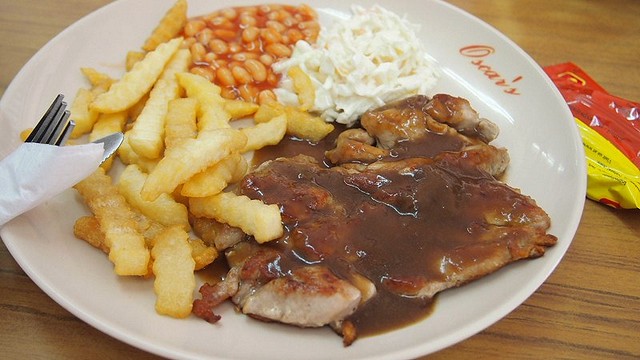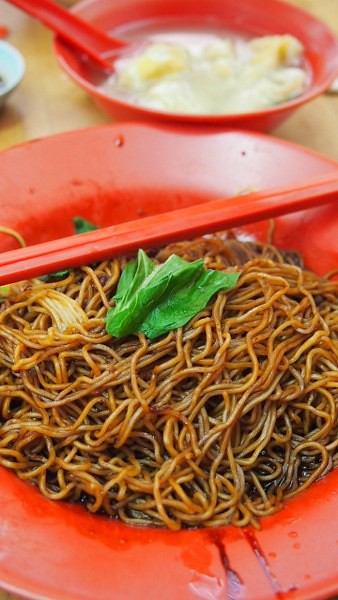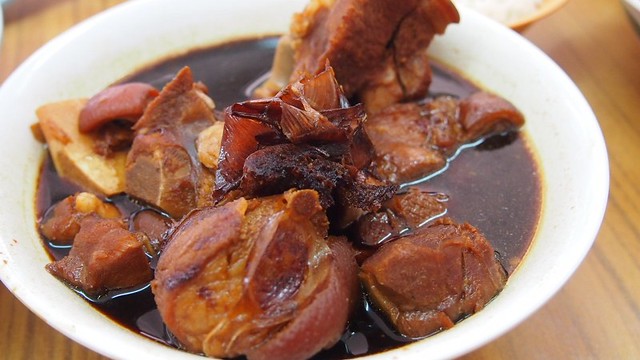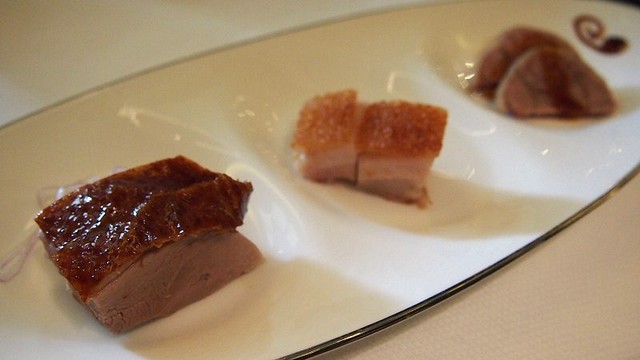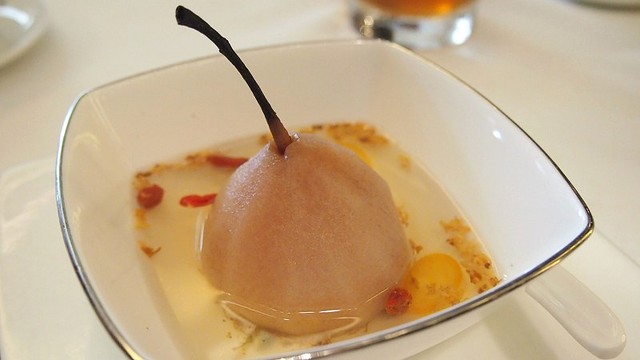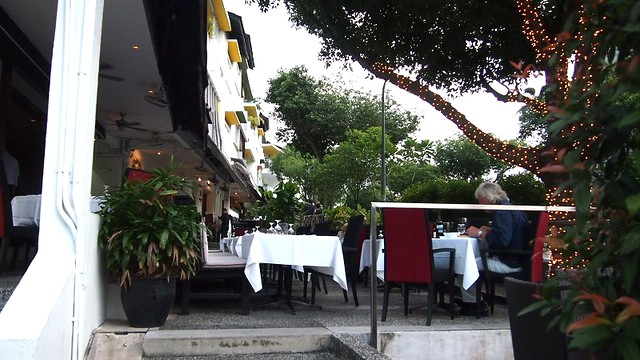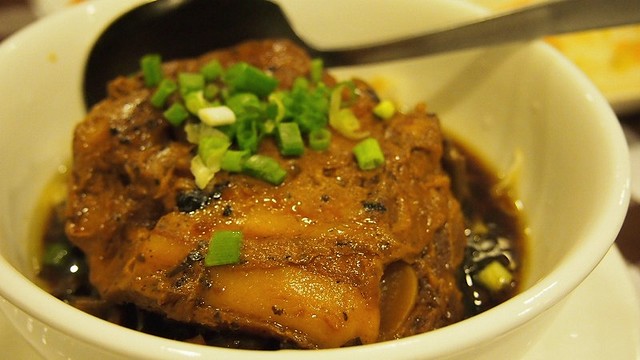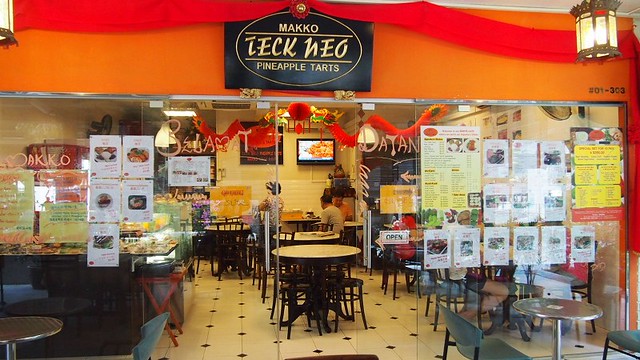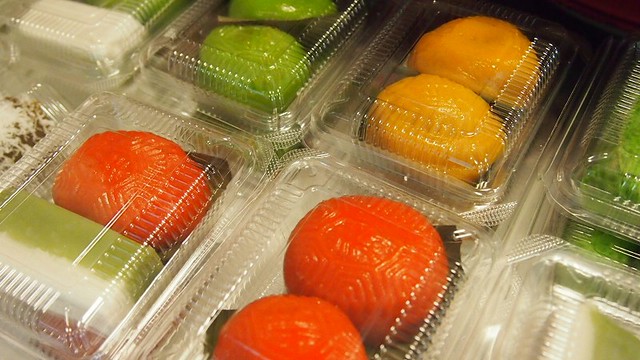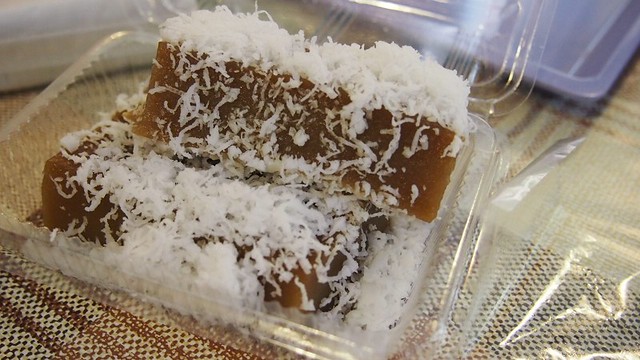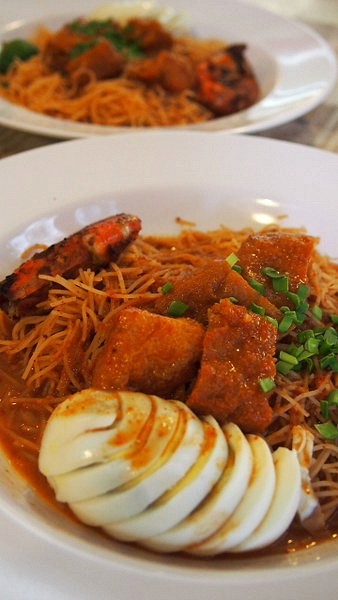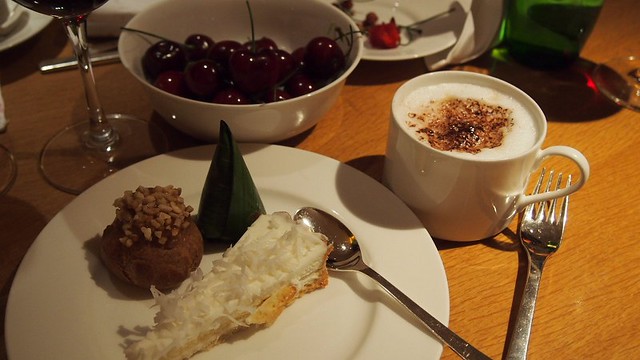Living here in KK all these years, I've never been to Ramadan bazaars. I can't even give the reason why. Maybe it's because my parents never went to any and so we don't know what we miss.
My son Wey has more Malay friends than I do, since he went to an 'English' school, and they took him to the Ramadan (the Muslim month of fasting/feasting) bazaar in 1 Borneo a few weeks ago. That opened his stomach to ayam penyet and kuih muih and he came home asking why we never go to Ramadan bazaars. Since then, we've been to the Asia City bazaar three times and the Lok Kawi bazaar once. I prefer the Asia City bazaar because of the variety and better quality than the Lok Kawi bazaar, which was stinky and dirty and most of the food already packed, with tons of flies swarming around. In the Asia City bazaar too, it was flies galore and that took much of my appetite away. The heat was sweltering and just walking for 20 minutes left me exhausted and drenched with sweat.

Chicken and beef satay.

Grilled sting rays.

Murtabak. I ordered one and it came covered with a sweet orange chili sauce that was awful.
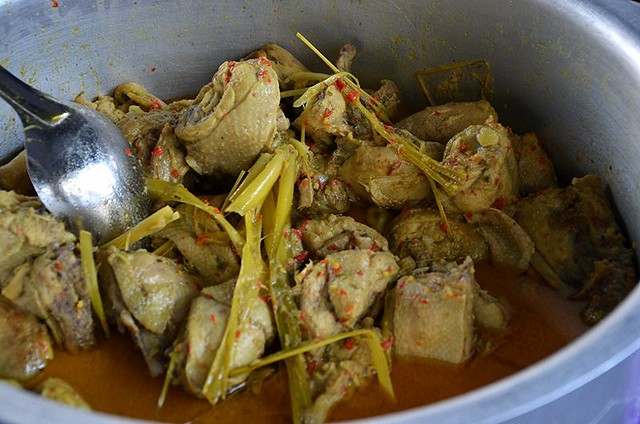
A chicken curry.

Hinava, a local fish ceviche.
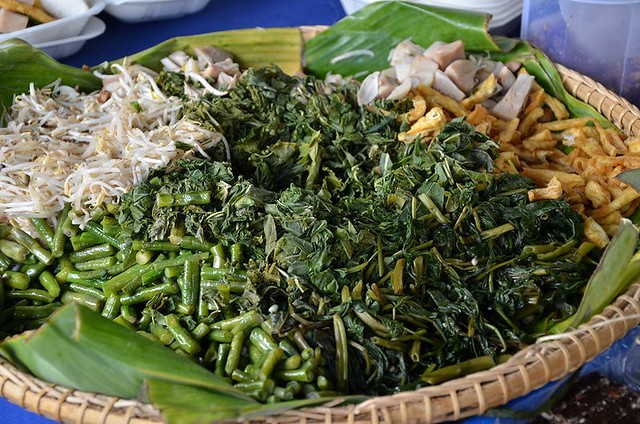
Rojak, a yummy Malaysian salad served with peanut sauce.

This was what we went to Asia City 3 times for. Nasi kerabu, the rice colored blue by the blue pea flower/bunga telang. Chili sauce, raw bean sprouts, long beans, bunga kantan, mint, daun kesom, fried grated coconut, half a salted egg and a mackerel stuffed chili made this an awesome dish of complex flavors and taste.

Laksam, a rice noodle dish from the state of Terengganu.

Ew-looking fish and coconut gravy goes with the laksam. Not exactly to my taste although I will eat it if I'm hungry.

Tempeh (where the hands are) is a delicious soya bean dish of Indonesian origin.

Roti John, something I've never eaten before and refused to try because smell of cheap margarine--I wonder which brand it is--made me shudder and nauseous.

Who drinks ICI paints?

Psychedelic ais kacang.

Unfortunately, these were tasteless because they were made with artificial coloring, artificial pandan extract and either little or canned coconut milk.

Puteri Ayu (Princess Ayu) are little pretty pandan-flavored sponge cakes with a rim of fresh coconut but these were bland, with hardly any pandan flavoring. What a pity that traditional kuihs have now become totally adulterated and awful tasting.

Kuih batik.

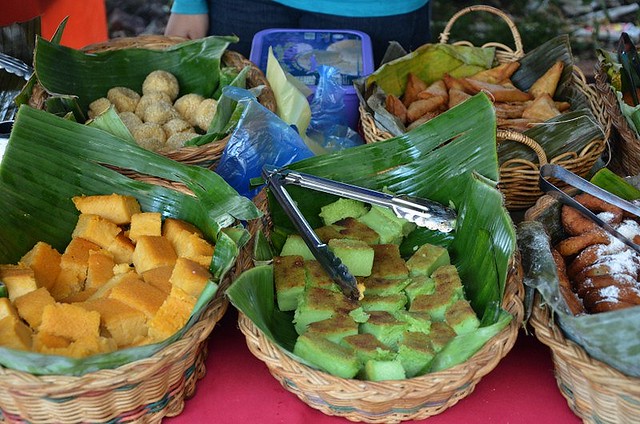
The following are photos taken at the Lok Kawi bazaar:

Wey had to buy the greenest ondeh ondeh in the market. The gula melaka inside was sourish, he said, and tasted of cough medicine. Serves you good I said.

Ayam percik. I've tried ayam percik, ayam penyet and nasi katok chicken and found katok chicken the best.

The vendor said this was Johor fish laksa, rice noodles with fish soup. It doesn't have as much spices and flavors as Penang assam laksa but it was tasty.
One more day before Hari Raya and 12 months before the next Ramadan bazaar...
My son Wey has more Malay friends than I do, since he went to an 'English' school, and they took him to the Ramadan (the Muslim month of fasting/feasting) bazaar in 1 Borneo a few weeks ago. That opened his stomach to ayam penyet and kuih muih and he came home asking why we never go to Ramadan bazaars. Since then, we've been to the Asia City bazaar three times and the Lok Kawi bazaar once. I prefer the Asia City bazaar because of the variety and better quality than the Lok Kawi bazaar, which was stinky and dirty and most of the food already packed, with tons of flies swarming around. In the Asia City bazaar too, it was flies galore and that took much of my appetite away. The heat was sweltering and just walking for 20 minutes left me exhausted and drenched with sweat.

Chicken and beef satay.

Grilled sting rays.

Murtabak. I ordered one and it came covered with a sweet orange chili sauce that was awful.

A chicken curry.

Hinava, a local fish ceviche.

Rojak, a yummy Malaysian salad served with peanut sauce.

This was what we went to Asia City 3 times for. Nasi kerabu, the rice colored blue by the blue pea flower/bunga telang. Chili sauce, raw bean sprouts, long beans, bunga kantan, mint, daun kesom, fried grated coconut, half a salted egg and a mackerel stuffed chili made this an awesome dish of complex flavors and taste.

Laksam, a rice noodle dish from the state of Terengganu.

Ew-looking fish and coconut gravy goes with the laksam. Not exactly to my taste although I will eat it if I'm hungry.

Tempeh (where the hands are) is a delicious soya bean dish of Indonesian origin.

Roti John, something I've never eaten before and refused to try because smell of cheap margarine--I wonder which brand it is--made me shudder and nauseous.

Who drinks ICI paints?

Psychedelic ais kacang.

Unfortunately, these were tasteless because they were made with artificial coloring, artificial pandan extract and either little or canned coconut milk.

Puteri Ayu (Princess Ayu) are little pretty pandan-flavored sponge cakes with a rim of fresh coconut but these were bland, with hardly any pandan flavoring. What a pity that traditional kuihs have now become totally adulterated and awful tasting.

Kuih batik.


The following are photos taken at the Lok Kawi bazaar:

Wey had to buy the greenest ondeh ondeh in the market. The gula melaka inside was sourish, he said, and tasted of cough medicine. Serves you good I said.

Ayam percik. I've tried ayam percik, ayam penyet and nasi katok chicken and found katok chicken the best.

The vendor said this was Johor fish laksa, rice noodles with fish soup. It doesn't have as much spices and flavors as Penang assam laksa but it was tasty.
One more day before Hari Raya and 12 months before the next Ramadan bazaar...









